In the television series Kozure Okami known both as Lone Wolf & Cub or Lone Wolf with Child, Kinnosuke Nakamura Yorozuya (formerly Nakamura) plays Ogami Ito, the ex Shogunate decapitator wandering the country side with his cute-as-a-button son Daigoro, hiring himself out as an assassin at 500 ryo per job.
As Tomisaburo Wakayama long defined the cinamatic character of the Lone Wolf Ogami Ito, it is inescapable that Kinnosuke's performance be held up for comparison. If any actor is superb enough to get the viewer past how absolutely spectacularly great Tomisaburo was in the feature films, it would be kabuki-trained Kinnosuke, a delightful & skilled performer who takes a backseat to no one.
He definitely makes the character his own, as Kinnosuke's Ito is more overt in revealing his great love toward Daigoro. Tomisaburo was always poker-faced & though we understood the bond between him & his son was intense, there was little need for more than eye-contact between them. Kinnosuke is more apt to smile at the lad, & show quite strongly how much he adores the little guy.
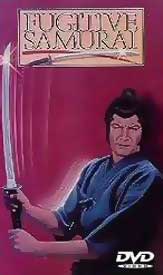 Kinnosuke has his champion as the Ito truest to the original manga version. In reality both Tomisaburo & Kinnosuke are playing Ito "older" & a bit chunkier than in the manga. Most like the comic book Ito in physical imagery would be Masakazu Tamura in Kozure Okami: Sono chisaki te ni (1993), yet the actor's charisma cannot compare to either Tomisaburo or Kinnosuke. Kinnosuke has his champion as the Ito truest to the original manga version. In reality both Tomisaburo & Kinnosuke are playing Ito "older" & a bit chunkier than in the manga. Most like the comic book Ito in physical imagery would be Masakazu Tamura in Kozure Okami: Sono chisaki te ni (1993), yet the actor's charisma cannot compare to either Tomisaburo or Kinnosuke.
Kinnosuke can be a scenery-chewing actor but in keeping with the almost wordless orginal manga stories, he subdues his more extravagant acting to present a centered, quieter Ito, even if not so quiet as Tomisaburo did it. In the fourth episode he will do some real scenery-chewing in a flashback to show Ogami Ito's downfall at the hands of the dispicable Yagyu spies, but in episodes showing him & Daigoro as well accustomed to their "road to hell," there is very little of Kinnosuke's broader capabilities.
In the Zatoichi television series, the episodes look & feel like mini-movies 44 minutes each plus teaser for next episode. But season one of Kozure Okami, elegant though it is, is definitely a television production without the fine cinematography of Tomisaburo's feature films or the cinema-like photography of Shintaro Katsu's television series. Yet the television episodes of Kozure Okami constitute high-end television, being tight, serious tales of mood & action, with some sequences capturing a high percentage of beauty of movement & environment seen in the feature films.
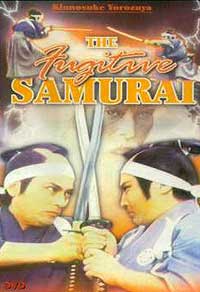 Although I've not seen the dubbed episodes, I cannot imagine the poetry of these episodes could be preserved by putting American English in characters' faces, but if there are any folks out there who just cannot bear subtitles, there does exist an English-dubbed version of the first couple episodes in circulation as Fugitive Samurai. I'm reviewing only the subtitled discs. Although I've not seen the dubbed episodes, I cannot imagine the poetry of these episodes could be preserved by putting American English in characters' faces, but if there are any folks out there who just cannot bear subtitles, there does exist an English-dubbed version of the first couple episodes in circulation as Fugitive Samurai. I'm reviewing only the subtitled discs.
In the first episode My Son & Sword for Hire, it is taken for granted that the viewer already knows the characters & their situation. Ito encounters a drawing on rice paper of oni devils & knows it was left for him by someone who wishes to hire him as an assassin. A second identical drawing leads him into an inn or bordello where he has a meeting with a woman of samurai lineage who has fallen on hard times. She has lived frugally & saved her earnings as a harlot for three years in order to afford the services of the Lone Wolf.
Ito does not accept every commission, as he has to personally feel there is either justice in what he is asked to do, or sincerity in his client, or both. Ohama's cause is a just one. On her wedding day, a spurned rival for her attentions attacked the ceremony with his henchmen, killing her parents & guests, fatally wounding the groom who was the killer's political rival as well, & raped Ohama in front of her fiance as he lay dying.
Ito takes her box of savings, sealing the fate of the Mibu clansmen she wants dead. First to fall is Jumai the gunner. Sword vs gun is always a tricky deal & Ito has to set up a clever strategy involving little Daigoro to throw the marksman off his game. Though in the television series overall there is not a lot of gore, there's one quick startling image when Ito cuts off the leg of Jumai's horse. After the kill, Ogami shows affection toward attentive Daigoro, who as usual is emotionless when closely watching his father's deadly actions.
Ito has been quite clear about Daigoro's attendance during such killings. "I take my son everywhere with me" he quite simply explains. When Ohama realizes Ogami really does take his son into the midst of every battle, she begins to feel bad about hiring him. She says, "If you must endanger him, I withdraw my request." But Ogami never quits a commission once he has accepted payment, & he has the added sentiment of finishing the commission when the mistress of one of Ohama's enemies manages to kill her.
To get into the inner circle of the castle & reach the best protected of the men he must kill will require further strategy. In his next encounter he is blinded with lye thrown in his face & is soon disarmed, bound, & brought before his enemy as a captive. Ito is never really helpless, however, & once he is inside the castle grounds, there's no hope remaining for Ohama's enemies. The only tragedy was that she herself was no longer alive to enjoy the outcome of her commission, which goes well beyond vengeance & proves beneficial to many who suffered under a tyrant.
A thing or two might be said of the theme song "Tetego-bashi" sung by "Bob" Satake. The Zatoichi television theme song sung by Shintaro Katsu is just so beautiful, but this catchy little jingle for Lone Wolf & Cub is too much a children's song.
Happily the season's series is better than the tune, & the stories told are family entertainment without being juvenile. This is in contrast with the Tomisaburo Wakayama's Babycart features which are gory stuff. For Lone Wolf & Cub the television series there's scads of swordplay action, but without the heaps of lopped off body parts, showers of spurting blood, or heads split open like melons. Many of the beautifully choreographed fight sequences are completely bloodless.
When blood is shown, it tends to be just a little bit of crimson tastefully squirted on foreheads. This concession to television standards of the 1970s doesn't injure the value of the stories, & a sizeable percentage of the audience will prefer the tastefulness. And children who might've liked the idea of a little-boy samurai & his assassin father could well have been traumatized by the feature films most grotesque passages, but not likely to be traumatized by the toned down series.
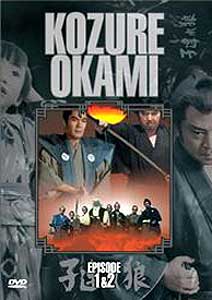 Episode 2 Fangs of the Wolf opens with a tense encounter on a bridge leading to an out of the way health spa. Ogami Ito manages to avoid bloodshed at this point & permits the threatening gangsters to "force" him to continue to the spa, which has been taken over by a large gang of murderous thugs. Episode 2 Fangs of the Wolf opens with a tense encounter on a bridge leading to an out of the way health spa. Ogami Ito manages to avoid bloodshed at this point & permits the threatening gangsters to "force" him to continue to the spa, which has been taken over by a large gang of murderous thugs.
Ito submits to mild abuse for some while, without letting on who he is or how dangerous it might be to attempt to sport with him. He observes the gang's murderous cruelty toward the family that runs the spa & toward the captive guests. The gang is hold up in this country spa hiding from the law, knowing that not only the law but also a famed group of bounty hunters are after them, since the gangsters are worth ten ryo per head.
Among the guests of the spa are many interesting characters, a monk, a goodhearted harlot, an entertainer with a monkey, a crude but handsome yakuza, a blind masseur, & so forth. Most of them seem terribly afraid but secretly the bounty hunters are among them awaiting their opportunity to take down the outlaws.
Revisiting the possibility of these episodes being appropriate for children, many a parent will not agree that Episode 2 is in any way suited for the very young. All episodes are violent even if the bloodiness is underplayed, but this episode in particular includes an erotic sequence. Nothing much is shown really, but what is kept barely off camera is for adults only. One of the gang members, while being crude toward the prostitute who has stopped him from threatening Daigoro, is told to have sex with the samurai sitting in the corner for everyone to watch, or else she'll be killed.
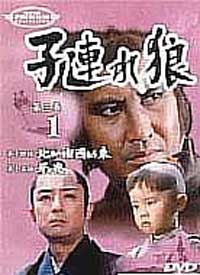 The proud but insecure prostitute believes she is too lowly for samurai clientelle & there is no chance of this happening, even if she were willing to put on a public display. So she is ready to be killed if that's what the wicked gangster insists upon. The proud but insecure prostitute believes she is too lowly for samurai clientelle & there is no chance of this happening, even if she were willing to put on a public display. So she is ready to be killed if that's what the wicked gangster insists upon.
Ito stands & begins to disrobe, & though tastefully filmed to be appropriate for primetime, it's fairly obvious from the looks in everyone's eyes that the samurai & the harlot do indeed put on a public sex performance. Though Daigoro in these episodes frequently watches with wide eyes as his father kills & kills & kills, in this episode the camera is careful to inform us he's sound asleep atop a high pile of folded futons.
At some point the bounty hunters realize the ronin with his son are the notorious ex-government decapitator, assassin with cub. The bounty on his one head is a great deal more than that of the heads of all the gangsters combined. So the bounty hunters reveal themselves to the gangsters & make a bargain to take down Ogami Ito.
The gang & bounty hunters begin with some hope that they can torture information from Ogami Ito, or get him to talk by threatening young Daigoro, so that they can find out where he hides the money he has earned over the last couple of years as a high-priced assassin. Living as a wandering masterless samurai, he certainly must have saved a fortune, such as would be required if he is ever to be in a position to bribe the right shogunate officials to re-establish the Ogami family.
Soon enough, however, they realize they'd be damned lucky just to get the bounty for his head, or even to get away from the spa with their own heads. They focus all their energy on the unlikely premise that they can kill Ito. Thus the staging is complete for the final confrontation, the outcome of which is a forgone conclusion, but nevertheless beautiful to behold.
copyright © by Paghat the Ratgirl
|
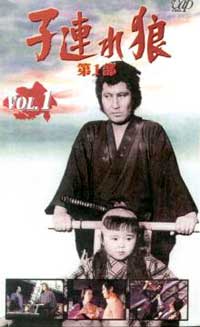
 Kinnosuke has his champion as the Ito truest to the original manga version. In reality both Tomisaburo & Kinnosuke are playing Ito "older" & a bit chunkier than in the manga. Most like the comic book Ito in physical imagery would be Masakazu Tamura in Kozure Okami: Sono chisaki te ni (1993), yet the actor's charisma cannot compare to either Tomisaburo or Kinnosuke.
Kinnosuke has his champion as the Ito truest to the original manga version. In reality both Tomisaburo & Kinnosuke are playing Ito "older" & a bit chunkier than in the manga. Most like the comic book Ito in physical imagery would be Masakazu Tamura in Kozure Okami: Sono chisaki te ni (1993), yet the actor's charisma cannot compare to either Tomisaburo or Kinnosuke. Although I've not seen the dubbed episodes, I cannot imagine the poetry of these episodes could be preserved by putting American English in characters' faces, but if there are any folks out there who just cannot bear subtitles, there does exist an English-dubbed version of the first couple episodes in circulation as Fugitive Samurai. I'm reviewing only the subtitled discs.
Although I've not seen the dubbed episodes, I cannot imagine the poetry of these episodes could be preserved by putting American English in characters' faces, but if there are any folks out there who just cannot bear subtitles, there does exist an English-dubbed version of the first couple episodes in circulation as Fugitive Samurai. I'm reviewing only the subtitled discs.
 The proud but insecure prostitute believes she is too lowly for samurai clientelle & there is no chance of this happening, even if she were willing to put on a public display. So she is ready to be killed if that's what the wicked gangster insists upon.
The proud but insecure prostitute believes she is too lowly for samurai clientelle & there is no chance of this happening, even if she were willing to put on a public display. So she is ready to be killed if that's what the wicked gangster insists upon.